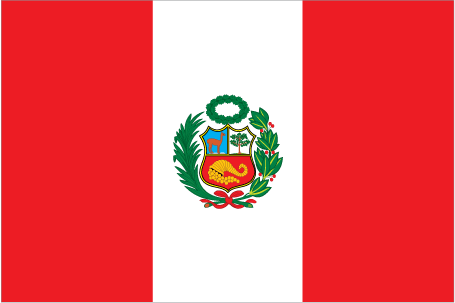To help inspire or plan your trip to Peru, some of its major attractions
for travellers are shown below, including some of the best natural, historical, cultural and adventure sites in the country.
These include all of UNESCO World Heritage Sites for Peru which represent the best
of the world's cultural and natural heritage.
Click on the icons below to focus on specific types of features
(click again to return to all).
|
|
|
|
|
|
|
|
|
|
|
|
 |
|---|---|---|---|---|---|---|---|---|---|---|---|
| Natural | History | Wildlife | Trekking | Cities | Religious Monument | Boat Journey | Rail Journey | Diving | Cultural | Adrenaline | UNESCO WHS |
Southern Peru - Cities of interest
| Cuzco | |
|---|---|
Cuzco was the historic capital of the Incas, developed under its ruler Pachacutec (1438-71) into a complex urban centre with distinct religious and administrative functions. The conquering Spanish preserved its structure and layout but built a colonial city over its foundations. Today, remnants from both these historical periods make Cuzco one of the most attractive and interesting cities in Latin America, as well as a great base for exploring the nearby Inca ruins including those at Machu Picchu. The Spanish colonial town is characterised by attractive pink tiled roofs, arcaded plazas and steep winding alleyways with the cathedral and Plaza de Armas being particular highlights. Many of the buildings are constructed on tremendous Inca foundation stones, ingeniously constructed with interlocking joints and stonework. Some of the prominent Inca remains include the Koricancha Sun Temple located in the Santo Domingo Church and the wall of Hatunrumiyoc with its famous twelve-sided stone. Cuzco is also filled with markets and artisan shops for buying souvenirs and numerous museums detailing Inca history and art. UNESCO World Heritage Site: City of Cuzco | |
| Lima | |
|---|---|
Lima was founded in 1535 and was the capital and most important city of the Spanish dominions of South America until the mid-18th century. Known as the 'City of the Kings', Lima's historic centre is a superb and well preserved collection of 17th and 18th century colonial buildings in the Hispano-American Baroque style. Notable buildings include Lima Cathedral and the Convent of San Francisco, while the historic quarter of the city also boasts many excellent museums filled with priceless artefacts from Incan and other pre-Hispanic civilisations, including the Museo Rafael Larco Herrera, Museo de La Nacion and the Gold Museum. The lively Barranco Quarter is a good spot to experience Lima at night, with many restaurants, bars and clubs with traditional Afro-Peruvian music. UNESCO World Heritage Site: Historic Centre of Lima | |
| Arequipa | |
|---|---|
Arequipa is southern Peru is the second largest city in the country and arguably the most beautiful. Located in a stunning setting at an altitude of 2380 metres and at the base of the perfect conical peak of the El Misti volcano (5882m), Arequipa was founded in 1540 and has a beautifully preserved historic colonial centre. Many of the buildings are constructed with sillar, a pearly white volcanic rock, giving the city its nickname La Ciudad Blanca, or the White City. Arequipa's buildings are characterised by robust walls, archways and vaults, courtyards and open spaces, and intricate Baroque decoration of its facades. Around the arcaded Plaza de Armas lies the city's cathedral, built in 1612, which is one of the finest in South America. The Santa Catalina Convent is a miniature town enclosed within a city block that was built in 1580 but closed to the outside world until the 1970s. Once housing 450 nuns and serving ladies in total seclusion, it provides a fascinating glimpse into their lives. Elsewhere, the Museum of Andean Sanctuaries has an intriguing exhibit of the ice mummies found atop some of Arequipa’s surrounding volcanoes. UNESCO World Heritage Site: Historical Centre of the City of Arequipa | |


